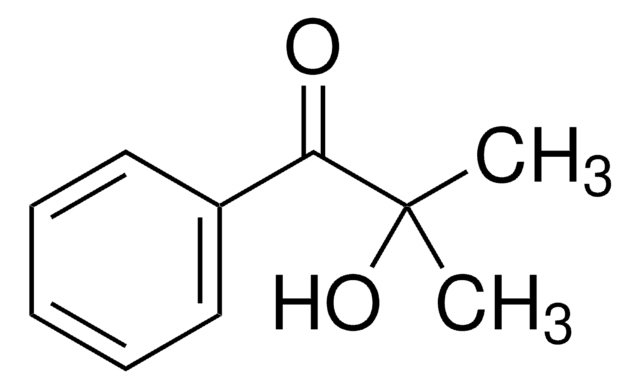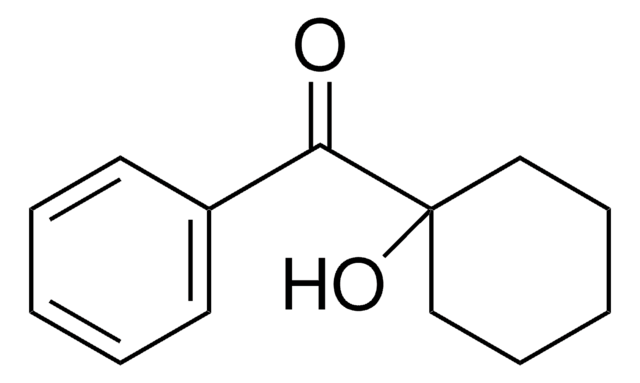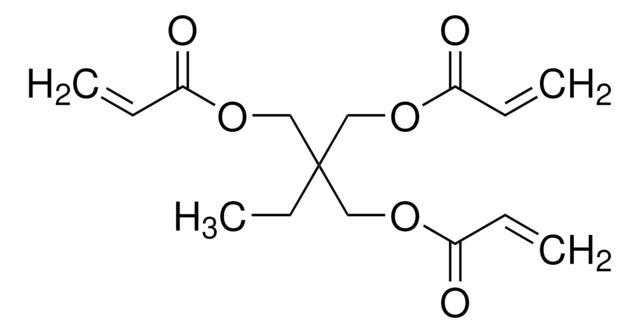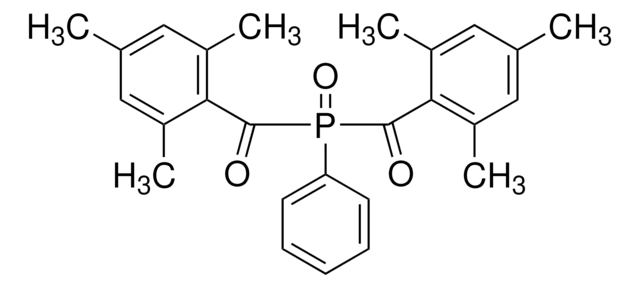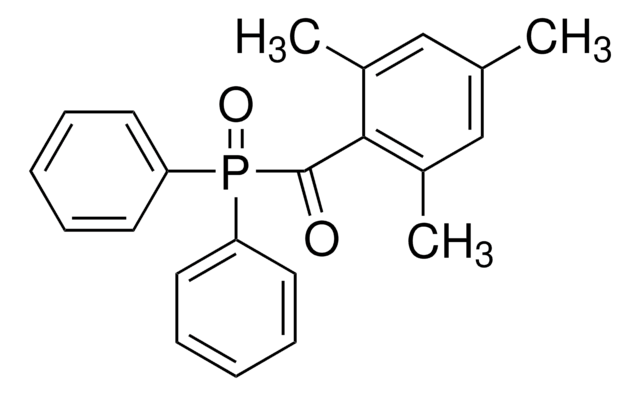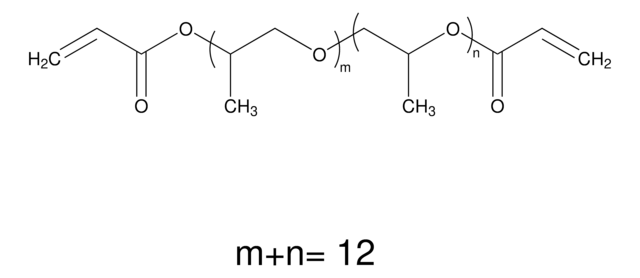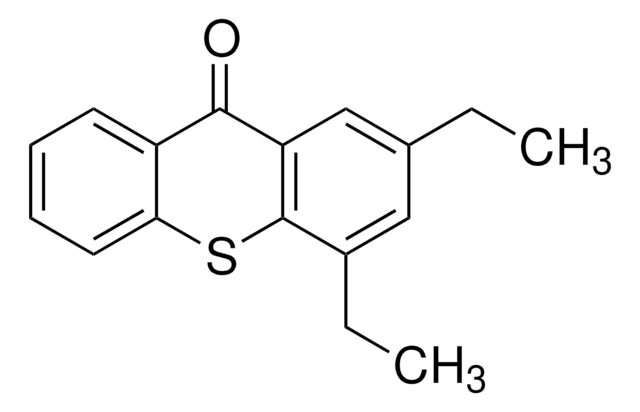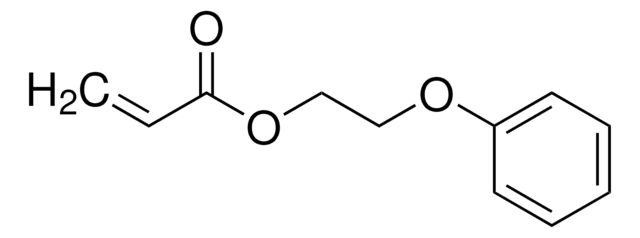246832
Tri(propylene glycol) diacrylate, mixture of isomers
contains MEHQ and HQ as inhibitors, technical grade
Sinonimo/i:
TRPGDA
About This Item
Prodotti consigliati
Grado
technical grade
Livello qualitativo
Densità del vapore
>1 (vs air)
Tensione di vapore
<0.01 mmHg ( 20 °C)
Stato
liquid
contiene
150-220 ppm monomethyl ether hydroquinone and hydroquinone (total inhibitor)
Indice di rifrazione
n20/D 1.45 (lit.)
Densità
1.03 g/mL at 25 °C (lit.)
Stringa SMILE
CC(COC(C)COC(=O)C=C)OCC(C)OC(=O)C=C
InChI
1S/C15H24O6/c1-6-14(16)20-12(4)9-18-8-11(3)19-10-13(5)21-15(17)7-2/h6-7,11-13H,1-2,8-10H2,3-5H3
ZDQNWDNMNKSMHI-UHFFFAOYSA-N
Categorie correlate
Descrizione generale
Applicazioni
- As a cross linker to synthesize resins for flexible micromaterials via projection microstereolithography (PμSL) screening formulations to fabricate microfluidic devices for cellular biosensors.
- As a dopant to prepare pure organic molecules with persistent luminescence at room temperature via intramolecular electronic coupling for forensic fingerprint detection.
- As a precursor to prepare high mechanical resilience double network hydrogel adhesives for wound healing patches.
Avvertenze
Warning
Indicazioni di pericolo
Consigli di prudenza
Classi di pericolo
Aquatic Chronic 2 - Eye Irrit. 2 - Skin Irrit. 2 - Skin Sens. 1 - STOT SE 3
Organi bersaglio
Respiratory system
Codice della classe di stoccaggio
10 - Combustible liquids
Classe di pericolosità dell'acqua (WGK)
WGK 2
Punto d’infiammabilità (°F)
307.4 °F - closed cup
Punto d’infiammabilità (°C)
153 °C - closed cup
Dispositivi di protezione individuale
Eyeshields, Faceshields, Gloves, type ABEK (EN14387) respirator filter
Scegli una delle versioni più recenti:
Possiedi già questo prodotto?
I documenti relativi ai prodotti acquistati recentemente sono disponibili nell’Archivio dei documenti.
I clienti hanno visto anche
Il team dei nostri ricercatori vanta grande esperienza in tutte le aree della ricerca quali Life Science, scienza dei materiali, sintesi chimica, cromatografia, discipline analitiche, ecc..
Contatta l'Assistenza Tecnica.
